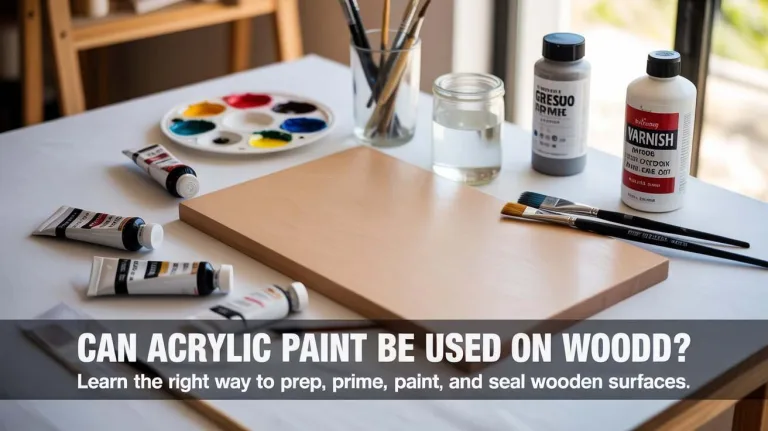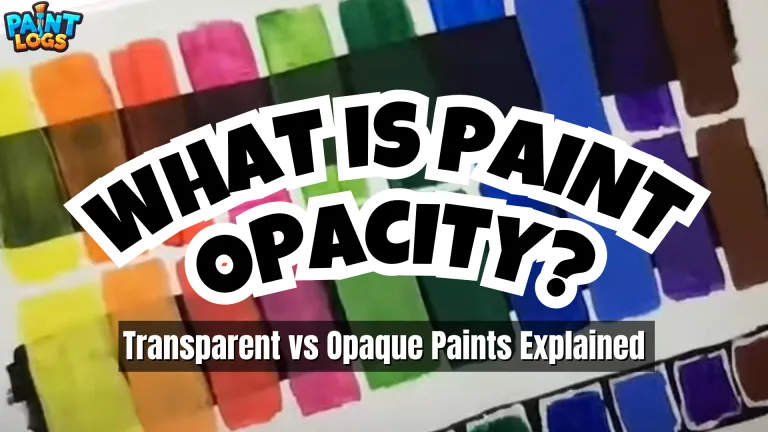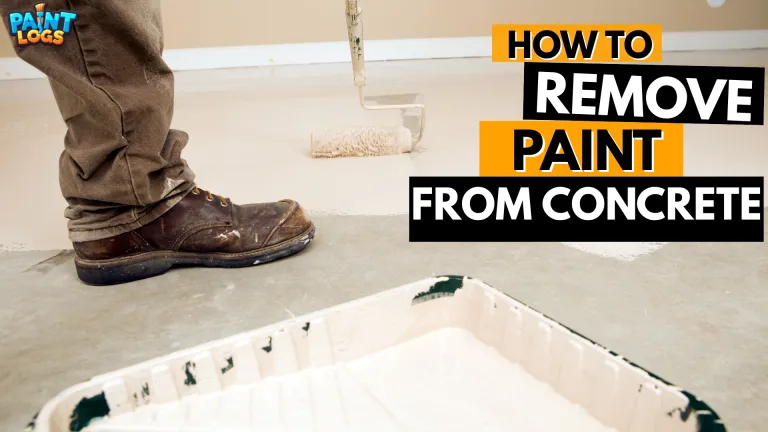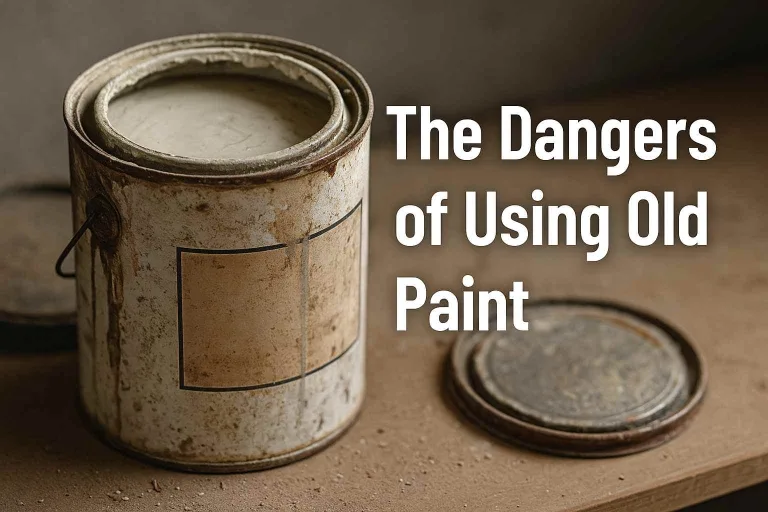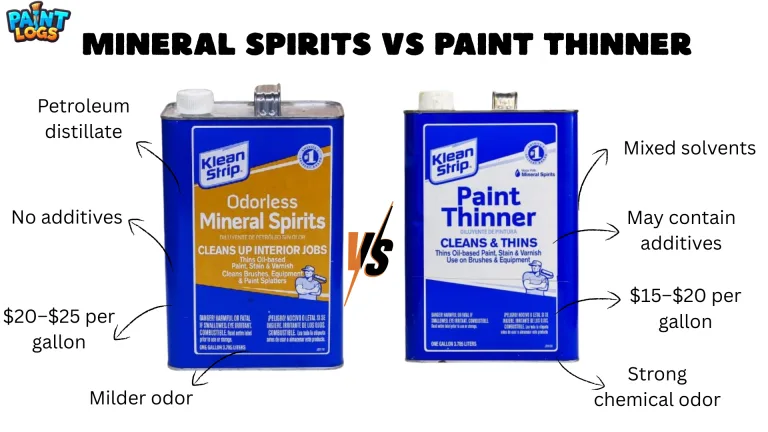Can You Use Exterior Paint Inside? In most cases, no, exterior paint isn’t meant for indoor use. It’s made to handle sunlight, rain, and temperature swings, not the still air and surfaces inside a home.
Exterior paints often contain stronger mildewcides and higher VOCs. These chemicals protect outdoor surfaces but can release harsh fumes indoors, causing irritation or headaches.
They also stay more flexible to handle weather changes. Inside, that flexibility can leave the surface softer and easier to scuff or mark.
There are rare exceptions, like in a garage or unfinished basement, where ventilation is strong and people don’t spend much time. Even then, use low-VOC exterior paint and allow plenty of drying time. For living areas, stick with interior paint designed for indoor air quality and durability.
How Interior and Exterior Paints Differ
Interior and exterior paints share basic ingredients — pigments, binders, solvents, and additives — but they’re balanced for different environments.
Resins:
Exterior paints use flexible resins that expand and contract outdoors. Interior paints use harder resins for a washable, durable finish.
Additives:
Exterior formulas include UV blockers, mildewcides, and weatherproofing agents. Indoors, these are unnecessary and can cause lingering odors. Learn more about the difference between interior and exterior paint and how each performs best.
Solvents:
Some exterior paints have stronger solvents for outdoor curing. Indoors, these contribute to high VOC levels and poor air quality.
In short, exterior paint is built to survive weather — not indoor living. Inside, it can stay tacky, smell longer, and wear poorly.

If You Must Use Exterior Paint Indoors: A Safety-First, Step-by-Step Checklist
Sometimes homeowners wonder, “Can you use exterior paint inside?” The short answer is not ideally — but if you’re left with extra paint or have a specific reason to apply it indoors, follow these safety steps carefully to reduce health risks and performance issues. Treat this as a temporary workaround, not a long-term solution.
1. Read the label and technical data sheet.
Check whether the manufacturer clearly says “not for interior use.” If it does, stop there. Review the VOC (volatile organic compound) levels and any warnings about indoor applications before you begin.
2. Choose the lowest-VOC exterior option available.
If you absolutely must use exterior paint indoors, select a water-based, low-VOC formula. Avoid solvent-heavy or oil-based versions — they emit far more fumes and take much longer to cure safely.
3. Prepare the space for maximum ventilation.
Open all windows and doors to create strong cross-ventilation. Use box fans to exhaust air outdoors and keep them running during painting and for at least 48–72 hours afterward. If the room will be occupied soon, extend ventilation until all odors are gone.
4. Use personal protective equipment (PPE).
At minimum, wear gloves, safety goggles (if splashing is possible), and a respirator rated for organic vapors. PPE is essential during both application and curing. (See our guide on choosing the right indoor painting safety gear.)
5. Test a small patch before committing.
Apply paint in an inconspicuous area and monitor for 48 hours. Check for strong odor, stickiness, or irritation among occupants. If it remains tacky or gives off strong fumes, stop and consider sealing or removing it.
6. Apply thin, even coats and allow full drying.
Avoid heavy wet coats that trap fumes. Thin layers dry and off-gas faster. Always follow the drying times and environmental recommendations listed on the can.
7. Plan to seal or topcoat with an interior finish later.
Once the exterior paint is fully cured, apply an interior-rated primer or topcoat to lock in additives, reduce odors, and create a washable surface. Always test adhesion before applying a full coat.
8. Limit occupancy and protect sensitive individuals.
Keep children, pregnant people, elderly individuals, and anyone with asthma or allergies out of the area until the air is completely clear.
9. If symptoms occur, ventilate more and seek help.
Headaches, nausea, or breathing difficulty signal poor air quality. Increase ventilation immediately and consult a professional or medical expert if symptoms persist.
Bottom Line:
This checklist can minimize — but not eliminate — the risks of using exterior paint indoors. Whenever possible, switch to a product formulated specifically for interior surfaces. It’s safer, longer-lasting, and healthier for everyone in the home.

Performance Differences Indoors
Exterior paint can look fine at first, but its behavior inside isn’t ideal. It stays slightly soft because it’s designed to flex outdoors. Indoors, that means it can feel tacky and scuff more easily.
The surface also attracts dust and marks that don’t wipe away cleanly. Scrubbing may leave shiny patches or dull spots.
Odor is another issue — exterior paints release fumes longer, and the smell can linger for days or weeks without strong airflow. If odor lingers, here’s how to manage paint odor and ventilation effectively.
Overall, interior paint simply performs better inside: it dries harder, cleans easier, and looks more even under indoor lighting.
What to Do If You Already Used Exterior Paint Inside
If you’ve already painted with exterior paint, don’t worry — just take a few steps to make it safer. Can you use exterior paint inside? Technically yes, but it’s not ideal for long-term use. First, ventilate the space as much as possible. Open windows, run fans, and let it air out for several days.
If the paint still feels soft after a week, lightly sand and seal it with an interior primer or clear coat. This locks in odor and creates a harder surface.
If the smell doesn’t fade or causes irritation, you may need to remove the paint and recoat with an interior product. Once sealed or replaced, air quality and durability will improve.
Can You Use Exterior Paint Inside the House?
Many homeowners wonder, can you use exterior paint inside your house? In most cases, no — exterior paint isn’t meant for indoor use. It’s specifically formulated to handle harsh outdoor conditions like sunlight, rain, and temperature swings, not the stable environment and still air inside your home.
Using it indoors can cause problems such as strong fumes, lingering odor, and a soft finish that doesn’t cure properly on interior surfaces.

Best Alternatives for Indoor Projects
For interior walls, trim, or furniture, choose paint made for indoor use. Interior latex or acrylic paints are low-odor, quick-drying, and easy to clean.
In humid areas like bathrooms or kitchens, use mildew-resistant interior paint for added protection.
For furniture or trim that needs a harder finish, pick interior enamel or acrylic-alkyd paint. These resist scuffs and clean easily without heavy fumes.
The right interior formula gives you lasting color, safer air, and a smooth finish — all without the problems that come from using exterior paint inside.
Conclusion
Exterior paint simply doesn’t belong inside.
It’s built for harsh outdoor weather, not for the confined, low-vent spaces of your home. The high VOCs, lingering odor, and soft finish make it a poor choice for any interior project.
Always match paint to its environment, interior paint for indoors, exterior paint for outdoors — to protect your health, your air quality, and the look of your home.
Using exterior paint inside might seem convenient, but it creates more problems than benefits. It gives off fumes, feels tacky, and won’t last as well as interior formulas.
For safe, durable, and easy-to-clean results, always use interior paint for walls, trim, and furniture. The right product makes your finish look better and keeps your home healthier.
FAQs
Can you use exterior paint inside your house?
You can, but it’s not recommended. It releases higher VOCs and doesn’t cure well indoors.
What happens if you use exterior paint inside?
It may stay soft, attract dust, and off-gas strong odors for weeks.
Is exterior paint toxic indoors?
Yes — the added mildewcides and solvents can cause headaches or irritation.
Is it safe once it’s dry?
Not entirely. Some chemicals continue to off-gas long after drying.
Can I use exterior paint inside a bathroom?
No. Bathrooms need moisture-resistant interior paint, not outdoor formulas.
What about using it in a garage or shed?
You can use it if ventilation is good, but fumes can still build up.
Can paint furniture with exterior paint?
Avoid it indoors. It can stay tacky and release chemicals when touched.
What’s the difference between interior and exterior paint?
Interior paint is made for durability and low odor; exterior for weather resistance.
Can I seal exterior paint to make it safe inside?
You can apply a clear sealer to reduce fumes, but it won’t fix soft texture issues.
Does exterior paint peel indoors?
Yes, it can. Without UV exposure, the binders don’t cure correctly and may peel.
Can I mix interior and exterior paint?
No — the additives conflict and can weaken both formulas.



